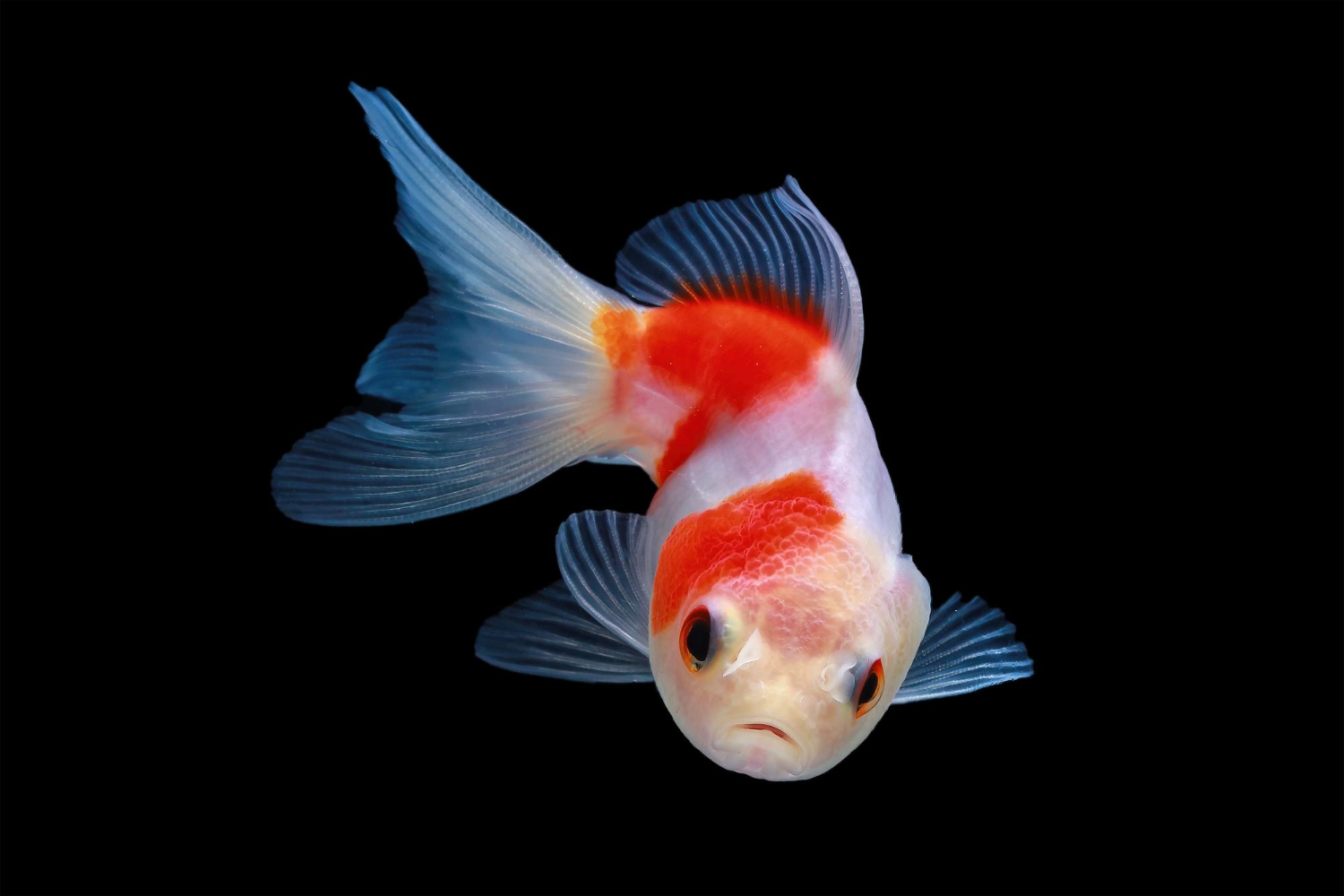Goldfish are known for their bright colours and lively behaviour. Nevertheless, it can be a cause for concern when goldfish owners observe some changes in the colouration of their pets, especially if they start turning black. This sudden transformation may raise questions about the fish’s health. This guide will examine why is my goldfish turning black ?, ranging from natural pigmentation changes to possible health problems and how to handle and prevent such incidents.
Natural Pigmentation Changes
One common reason a goldfish may turn black is natural pigmentation changes. Like freckles or moles that develop over time in humans, goldfish’s colourations can shift as they grow older. More specifically, melanin, which is responsible for black pigmentation, increases in what is called melanism.
Genetic Factors
Genetics can significantly influence the colour of a goldfish. Some breeds of goldfish are born with patches of black or undergo colour mutation as they mature. Typical examples include Black Moor or Panda Goldfish, which have distinctive dark marks.
Ageing Process
As they age, goldfish’s colours tend to change. Juvenile ones usually begin with less shining tones and become more vibrant with age. On the other hand, some species darken as they age, thereby developing spots or patches that are blackish in appearance; these variations are generally harmless forms of ageing.
Environmental Factors
The colours in which a goldfish appears may also depend on environmental factors within its tank walls. These factors include poor water quality, incorrect tank conditions, and inadequate nutrition, which could lead to colour change, including the formation of blackish spots.
Water Quality
You must maintain good water quality for your fish’s sake. Improper water conditions like high ammonia, nitrite, or nitrates can stress the fish, leading to various health problems that include colour changes. If ammonia levels are too high in a goldfish tank, ammonia burns can develop on the body of a goldfish, causing black patches. Ammonia burns happen when there is an excessive amount of ammonia in the water, thereby resulting in chemical burns on the skin of a fish.
To promote good water quality, regularly test the water and keep filters in check. I was changing the water weekly. Usually, about 20-25% of the total tank volume helps maintain nitrate and ammonia at acceptable levels. Moreover, be careful not to overfeed since leftover foodstuffs can rot, causing poor water quality.
Tank Conditions
The general atmosphere prevailing within an aquarium also decides the colourations shown by goldfish. Goldfish are very sensitive to their environment, so any slight change causes stress, followed by transformation, which manifests through colouring. It would be wise for you to ensure that your goldfish has enough space because overcrowding causes stress and may result in sickness.
Moreover, having some hiding places and stable conditions is essential here because this could help relieve stress. Similarly, uninterrupted lighting or temperature conditions are other things to remember when maintaining your fish’s health and colour.
Nutrition
A balanced diet is necessary for maintaining healthy and colourful goldfish. Lack of proper nutrition may lead to different diseases, including colour changes. Hence, a variety of dry foods like flakes or pellets and even live, frozen, or raw-type feeds should sometimes be given in addition to what they eat daily.
A diet rich in vitamins and minerals is beneficial for goldfish. Including vegetables like blanched peas, spinach, or zucchini will give them the nutrients they require for vibrant colours and overall health.
Health Issues
However, certain diseases or environmental factors can also trigger black colouration in goldfish. Therefore, if you want your fish to remain healthy, find out what these problems are and deal with them as soon as possible.
Ammonia Burns
As mentioned earlier, ammonia burns commonly cause black patches on goldfish. In such cases, high levels of ammonia result in chemical burns that affect the fish’s skin. Symptoms include lethargy, gasping at the water surface, and black patches on the skin.
Regularly test your water for ammonia levels to prevent ammonia burns, and perform water changes to control them. A sound filtration system is essential to keeping good water quality in the tank. If there’s any indication of ammonia burns, immediately remove any pollution and assess your fish’s condition.
Parasites and Infections
Colour changes in goldfish may result from parasites or infections. External parasites such as lice or flukes could irritate their skins, resulting in black spots or patching, whereas bacterial and fungal infections might also influence colouration.
When there is suspicion that your goldfish has an infection or parasite, it should be isolated from other fish so that you can consult an aquatic vet specialist or experienced pet store attendant who would prescribe medication baths possibly involving other chemicals used to kill off a parasite/infection found within the tank water itself.
Stress
One factor contributing to goldfish colour change is stress. Stressors like dirty tanks, abrupt alteration of tank conditions, or even bullying from other inhabitants may cause your goldfish to develop black spots on its body.
This means identifying the reasons behind these stresses becomes essential for maintaining good health among our fish: ensure stable tank conditions, offer hiding places, and avoid changes in light and temperature.
Prevention and Care
Optimal tank conditions, a balanced diet and regular observation for any abnormality are ways to prevent black colouration in goldfish. Below are a few steps to ensure that your goldfish remains healthy:
- Maintain Water Quality: Test the water regularly for ammonia, nitrite, nitrate and pH levels. Change the water weekly using an effective filtration system.
- Provide a Balanced Diet: Feed your fish with high-quality flakes or pellets and occasional live food such as brine shrimp. The diet should also contain all the necessary vitamins and minerals they need.
- Monitor Tank Conditions: Avoid overcrowding your aquarium to not stress your fish out. Smaller tanks should have nooks and crannies, while lighting must be stable within acceptable range.
- Observe Behavior: Watch their behaviour daily. Treating problems early can save lives.
- Address Health Issues Promptly: If you notice anything unusual, like black spots, rectify it immediately by consulting veterinary officers or experienced pet store operators who may give you guidelines on how to deal with this situation.
Conclusion
It can be worrying to see your goldfish blacken, but knowing the potential causes can help you sort out the problem. Whether due to natural pigmentation, environmental factors, or sickness, having a well-maintained tank and offering them a balanced diet will ensure your goldfish remains healthy.
Observing the behavior and appearance of your goldfish will help you identify any issues. By caring for them and providing for their needs, they will thrive in their aquatic home and bring beauty and joy into our lives for many years.




